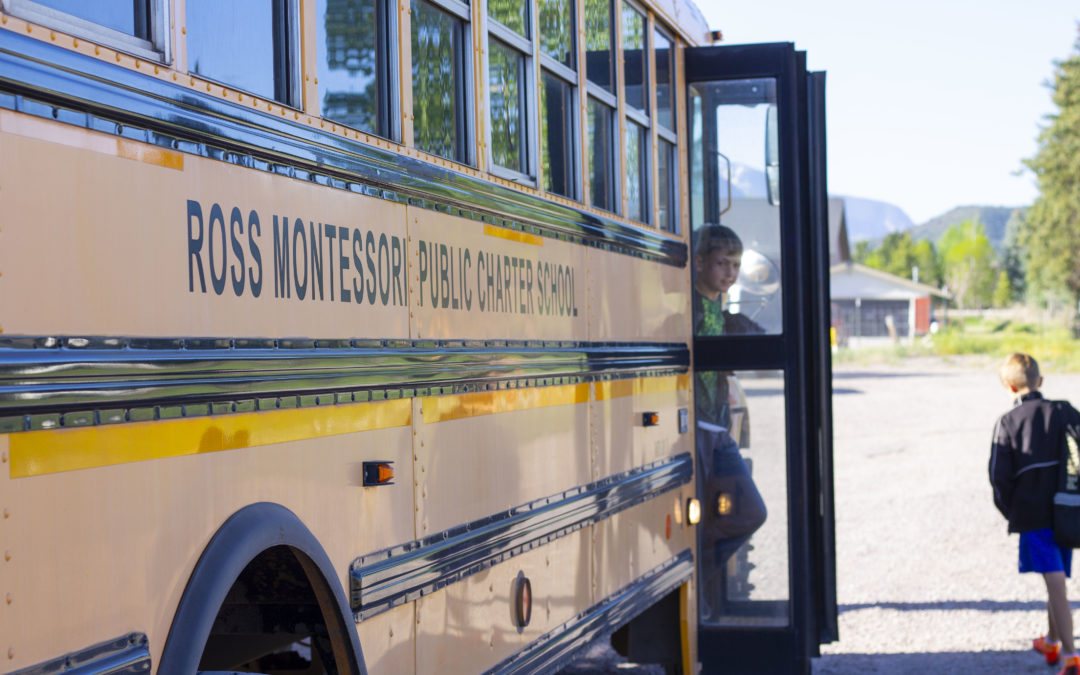Earlier this summer I participated on a panel at the National Charter Schools Conference put on by the National Alliance for Public Charter Schools to advance the conversation on improving the climate for charter schools in rural communities. With me on the panel was Terry Ryan from Bluum, an Idaho non-profit focused on maximizing learning opportunities for children, and Jim Griffin from Momentum Strategy and Research, an organization focused on using data and research to inform K-12 educational policy and practice.
Colorado’s Context
First, a short history lesson in the establishment of school districts in Colorado (and a special thanks to CSI’s Performance and Accountability Analyst, Aislinn Walsh, for conducting the research and compiling this information!) In 1886, ten years after Colorado became a state, most school districts contained only one school. Then, from 1956 to 1965, Colorado’s most extensive school reorganization occurred, mostly for financial reasons. Since 2000, 178 school districts operate in Colorado, and 146 of these districts are rural or small rural.
In Colorado, the 39 rural districts each have less than 6,500 students, and the 107 small rural districts have less than 1,000 students. In the 2018-2019 school year, CSI authorized 8 rural schools collectively serving 1,500 students in 6 of these districts.
|
Rural & Small Rural Schools |
Model Offered |
Grades Served |
Local District Size |
CSI School Size |
|
Animas High School |
Project-based learning |
9-12 |
5,419 |
252 |
|
Frontier Charter Academy |
Core Knowledge |
K-8 |
467 |
18 |
|
Indian Peaks Charter School |
Expeditionary |
K-8 |
1,358 |
18 |
|
Mountain Middle School |
Project-based learning |
4-8 |
5,419 |
251 |
|
Mountain Village Montessori Charter School |
Montessori |
PK-8 |
2,674 |
134 |
|
Ross Montessori School |
Montessori |
K-8 |
5,687 |
292 |
|
Salida Montessori Charter School |
Montessori |
PK-8 |
1,265 |
87 |
|
Two Rivers Community School |
Place Based |
K-8 |
5,687 |
350 |
The Challenges
The panel conversation centered around the importance of school choice in rural communities and ways to connect small resources to resources.
As with all school choice options, charter schools must fulfill a community need to be viable options. However, in rural areas, where small schools are fairly common, are there additional resources charters need?
During the Colorado League of Charter School’s 2018 Leadership Summit, rural schools met to discuss the outcomes of the Rural Education Council’s work in 2018 and to identify the top areas of focus for the future. Some of those topics included teacher and SPED service provider recruitment.
Of course, access to funding is a significant factor in a small school’s success. While small school districts serving fewer than fifty students by law receive funding for a minimum of fifty students, CSI charter schools don’t receive access to similar funding levels if they serve fewer than fifty students – despite the fact they are funded individually just like school districts.
Last year, CSI had two rural schools serving 18 students each. It was financially inviable for them to remain open so both shut their doors prior to the 2019-2020 school year (here are press releases on the closure of Indian Peaks Charter School in Granby and Frontier Charter Academy in Calhan).
While a small number, they aren’t the only schools below 25 students in the state. There are at least 25 schools in Colorado that have 25 or fewer students, 7 of which are in districts with fewer than 50 students.
While there are no silver bullets to addressing the challenges for rural chartering, for an organization that wants to ensure there are choices for families across the state, including in rural areas, we continue to think creatively on how to best support our rural charters.

